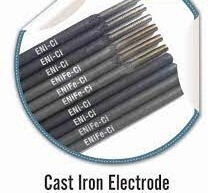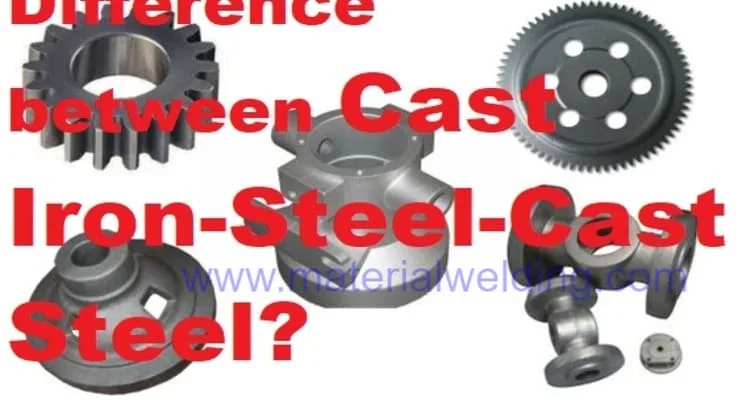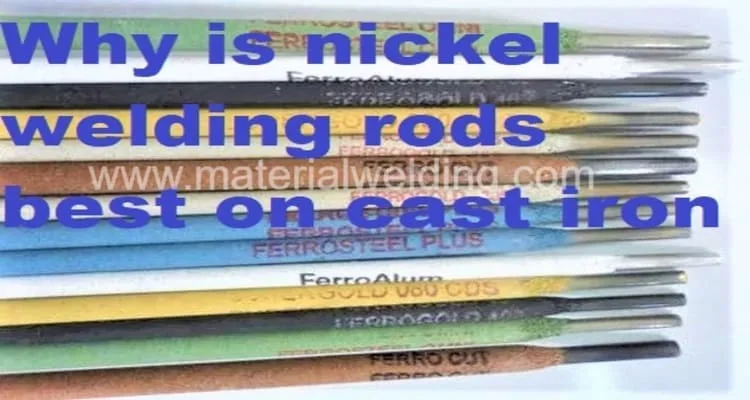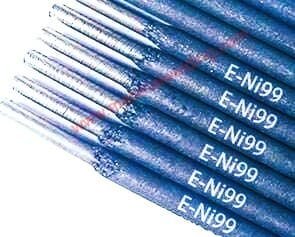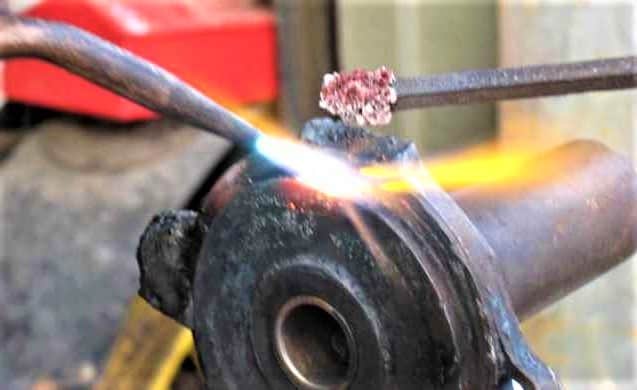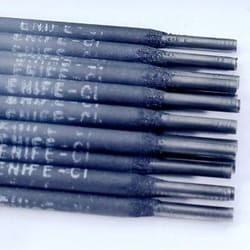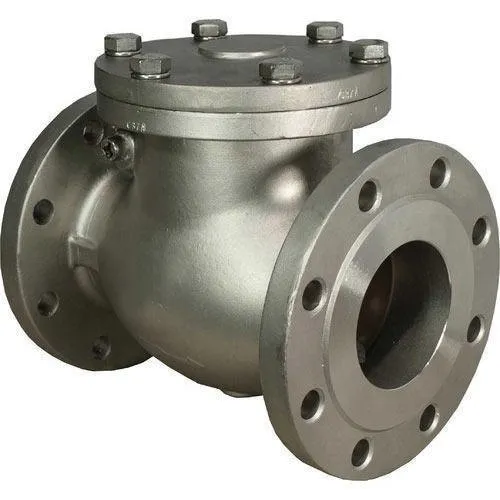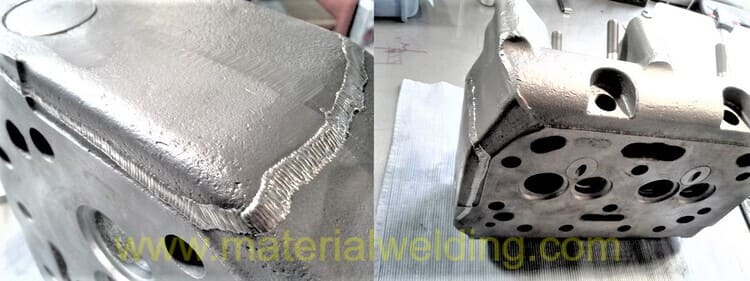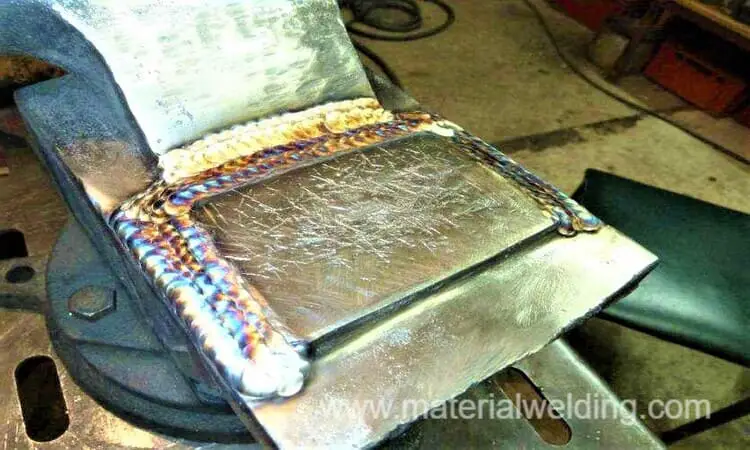Detailed Guide on Cast Iron types, their Identification & Welding
Cast irons are assumed to have good weldability but it is actually the opposite. They are much harder to weld and not easy to predict, especially the old cast iron with high inherent impurities such as Lead, Sulfur, and Phosphorus, etc. Reason- The casting processes were not much advance in older time, as they are today with explicit control on each alloying element during casting. These impurities make welding difficult for these old cast irons.
One example- Cast iron with high graphite (Carbon) content, you will notice porosity in the first weld pass or fusion line, no matter what technique you use with stick welding. This happen as the excess graphite burns during the first bead placement. If this porosity is a concern, go for cast iron brazing. Alternatively, grind those first weld layers, and replace with fresh weld beads.
Different type of cast iron behaves differently during and after welding. For example, an SG Iron can restrain more residual stresses compared to grey cast iron during welding. Cast iron as we know is a type of ferrous alloy having more than 2% carbon, 1 to 3% silicon & manganese, and a small amount of sulfur and phosphorus. They have a low melting point compared to steel and also low toughness and ductility.
Types of Cast Irons
The main types of cast irons are:
- Gray Cast Iron
- White cast iron
- Nodular Cast Iron
- malleable cast iron
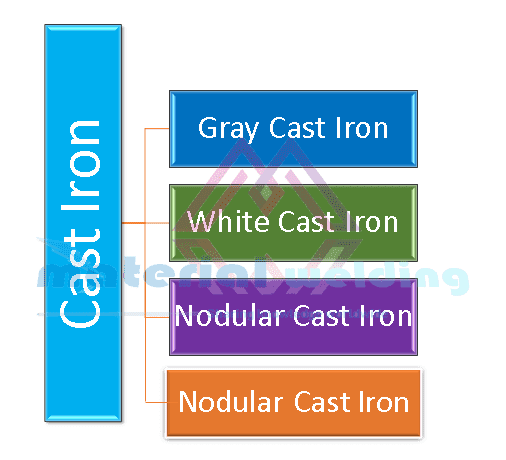
Cast Iron Microstructure
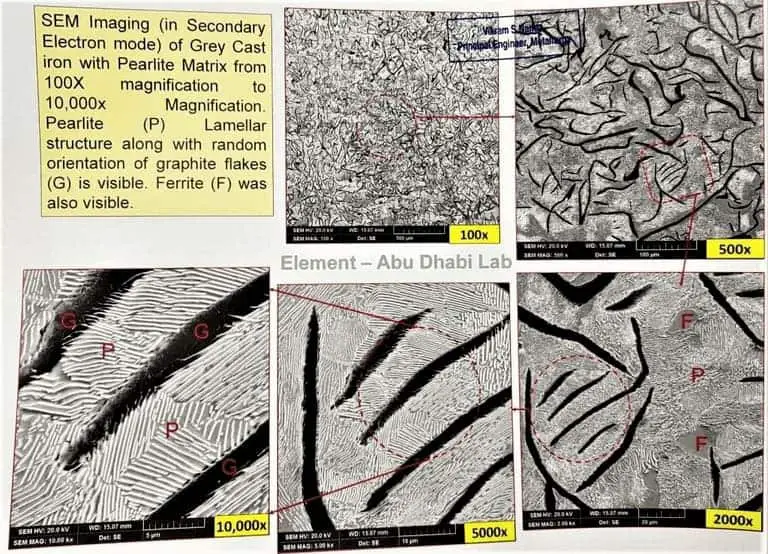
How to Identify Cast Iron Types
Identification of cast iron can be made using the following methods:
- Visual inspection- dirty, dark grey appearance for gray & SG Cast iron, white cast iron- whitish color.
- Verification by test certificate, supplier material identification.
- Spark test- Refer below picture to idenfiy cast iron based on type of spark.
- Metallographic testing
In all of the above tests, the spark test for cast iron identification is widely used and easy to make in the workshop. What you need is an EXPERIENCED EYES & a Hand Grinder. Notice the spark color and their length.
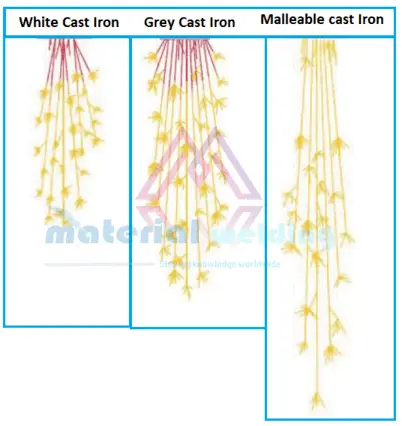
Welding of Various Cast Iron
Stick Welding (SMAW) is so far the widely used welding method for repair and welding cast iron. Brazing is also one of the best option, where it is not possible to perform the stick welding. Hence, Welding or brazing of cast iron is generally used for:
- Welding repairs of foundary defects.
- Repairs of in-service casting parts such as pumps, valves etc.
- weld builtup on cast iron due to corrsion or repairs.
All types of cast iron except white cast iron are considered weldable but more difficult compare to carbon steel. Welding is also dependent on the age of cast iron as earlier made cast irons have more impurities compared to modern ones where casting processes are highly improved. Today welding of cast iron is carried out using stick welding (SMAW), TIG, GMAW & FCAW and by brazing- most common for difficult to weld cast-iron types. The below chart gives the recommended welding rod/consumables for welding cast iron using stick welding, FCAW, GTAW, GMAW, and brazing for reference.

Generally, the weldability of different cast iron is can be given as:
- Gray cast iron – Can be welded with some difficulties.
- White cast iron – welding not possible.
- Malleable cast iron – welding affect the mechanical properties and part will not match weld properties.
- Ductile cast iron – Very difficult to weld and highly time consuming.
Welding Rod/ TIG MIG filler wire for cast Iron welding
Stick welding or SMAW welding of cast irons is done using Nickel 99 (AWS A5.15 ENi-Cl), and Nickel 55 (AWS A5.15 ENiFe-Cl) welding rods. These electrodes are having high nickel content to offer good solubility for high carbon and give a ductile weld to absorb weld stresses which otherwise could crack the cast iron.
Braze welding or brazing is another most widely joining process for cast iron repairs and welding of cast iron to other materials such as carbon steel or alloy steel. Brazing or brazing welding of cast irons is done using flux coated Low Fuming Bronze (RBCuZn-C) rod or the Nickel Silver (RBCuZn-D) rod. Additional brazing flux during welding helps in the good flow of the molten puddle in the welding zone.
When making cast iron brazing, make sure to give enough flux for each rod dip, this is important element that bring the brazing cleanliness and ensure the bonding between the cast iron and brazing molten metal.
Preheating of Cast Irons for welding
-For Stick (SMAW) Welding
Preheating is not mandatory for welding cast iron but it can be useful to counter hardness. Cast iron with having lead content (you can identify if the cast iron changes color to greenish due to heating) is beneficial to preheat before welding.
But cast-iron types having weldability issues are best to weld without preheating using cold welding. Cold welding here means welding small runs instead of welding full runs on cast irons that are difficult to weld. Cast iron where there are no cracking issues can be welded with continuous welding operations.
